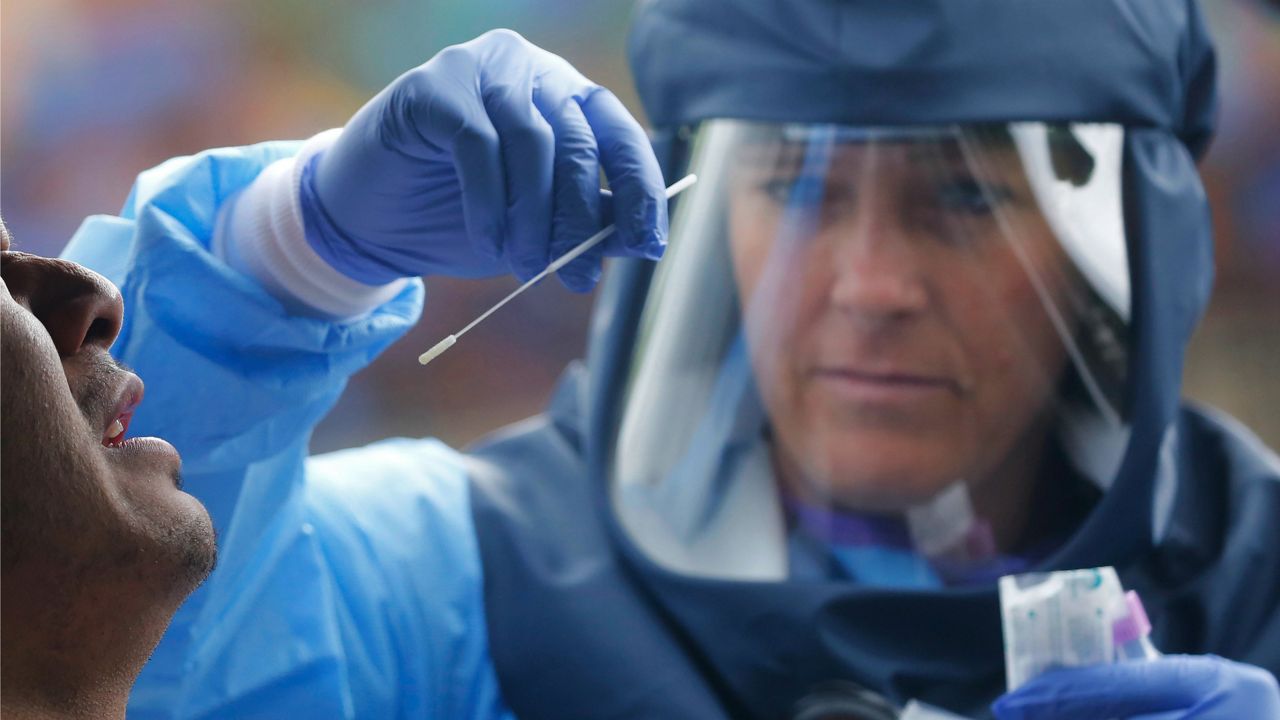MILWAUKEE (SPECTRUM NEWS) — There are a variety of ways to measure the spread of COVID-19. Right now, Wisconsin is faring poorly on a number of them.
“We cannot continue on this path,” Gov. Tony Evers said at a state briefing on Tuesday. “At one point Wisconsin was in a pretty good place, but that is no longer the case.”
One simple metric showing the increase: The state has been adding high numbers of cases each day. After a period of late-summer decline, Wisconsin’s daily reported coronavirus cases have been spiking again in the past couple of weeks, even as overall spread in the U.S. is trending downward.
Sunday saw the highest single-day case total for the state so far, with 1,582 cases added, according to data from the state’s Department of Health Services. This marked the third time in September that Wisconsin has broken its own daily record, after the previous high from Aug. 8 held steady for almost a month.
The DHS has urged people to look at longer trends, since day-to-day specifics can fluctuate. “Rather than focusing on the number of new cases on a given day, it's helpful to monitor the overall trend in the number of new cases,” the department wrote on Twitter after a problem with data reporting apparently led to extra-high numbers on Sept. 4.
But the numbers have been increasing on longer scales as well: As of Tuesday, the seven-day average for cases confirmed each day was at 1,261, setting its own record for the highest weekly average.
The spike doesn’t appear to come from more testing, either, as overall numbers of tests have actually fallen slightly since early August and the state’s positivity rates — the percentages of people tested who get a positive result — have climbed.
“I think it really is the case that we’ve had a dramatic acceleration of transmission in the state,” Ryan Westergaard, chief medical officer for the DHS Bureau of Communicable Diseases, said at Tuesday’s briefing.
Sunday and Monday both saw positive percentages hovering around 20%. As of Monday, the seven-day average hit a record 14.9%, though that number dipped slightly on Tuesday.
High positivity rates are a “good predictor of a surge,” infectious disease expert Anthony Fauci said in an August interview with JAMA. The World Health Organization recommends that governments should only reopen after keeping their positivity rates below 5%, as higher percentages signify more transmission and mean that testing probably isn’t catching all the cases in a community.
The DHS also has its own framework to assess COVID-19 activity in parts of the state. It’s broken down into two indicators: burden, or the two-week total cases per 100,000 residents, and trajectory, or the percent change in cases.
As of the department’s most recent assessment, almost all of Wisconsin’s counties — 65 of them, out of 72 total — had a high level of COVID-19 activity based on this framework. Only Price County had a low activity level.
This weekend, Wisconsin also ranked seventh on a list of states’ COVID-19 risk levels published by the Harvard Global Health Institute. That ranking relies on another metric: the number of daily new cases per 100,000 residents, averaged over seven days.
In Wisconsin overall, that average was 19.6 cases per 100,000 people, placing the state in the framework’s “accelerated spread” category. For this risk level, the researchers recommend stay-at-home orders and “rigorous test and trace programs.”
And some parts of the state had averages that would put them in the highest risk category — including Dane County, La Crosse County, and Forest County, which had the highest average of 77.7. At this “red” risk level, researchers say stay-at-home orders are necessary to stop the spread.
In comparison, Vermont — the only state that was “on track for containment,” according to the dashboard — averaged 0.8 cases per 100,000 people.
So what’s driving this latest case spike?
“Now, by far, statewide the biggest contributor to the overall case rate are outbreaks in educational settings,” Westergaard said.
Since colleges have returned for fall semester, thousands of students and staff have tested positive for coronavirus. Public Health Madison and Dane County reported Monday that between Sept. 1 and 12, three-quarters of all COVID-19 cases in the county were from students or staff at UW-Madison. Other cities with college campuses — including La Crosse, Platteville, and Whitewater — ranked highly among metro areas with rapidly increasing case numbers, according to The New York Times.
Still, UW-Madison Chancellor Rebecca Blank said Monday that she didn’t regret the choice to bring students back to campus. Evers said at Tuesday’s briefing that they knew the return to schools was going to be “bumpy,” both at the K-12 and university levels, and stressed the importance of “individual responsibility” for students.
The governor and other officials encouraged Wisconsinites to keep up their efforts to stop the spread: wearing masks, getting tested, keeping their distance. Though “pandemic fatigue” might be setting in, they said the risk is far from over.
“As many Wisconsin families, workers, and students get back into the routine of the school year, it can be easy to fall into old habits,” Evers said. “But folks, the COVID-19 pandemic is still very much raging on in our communities. We need to take every precaution, perhaps now more than ever.”



